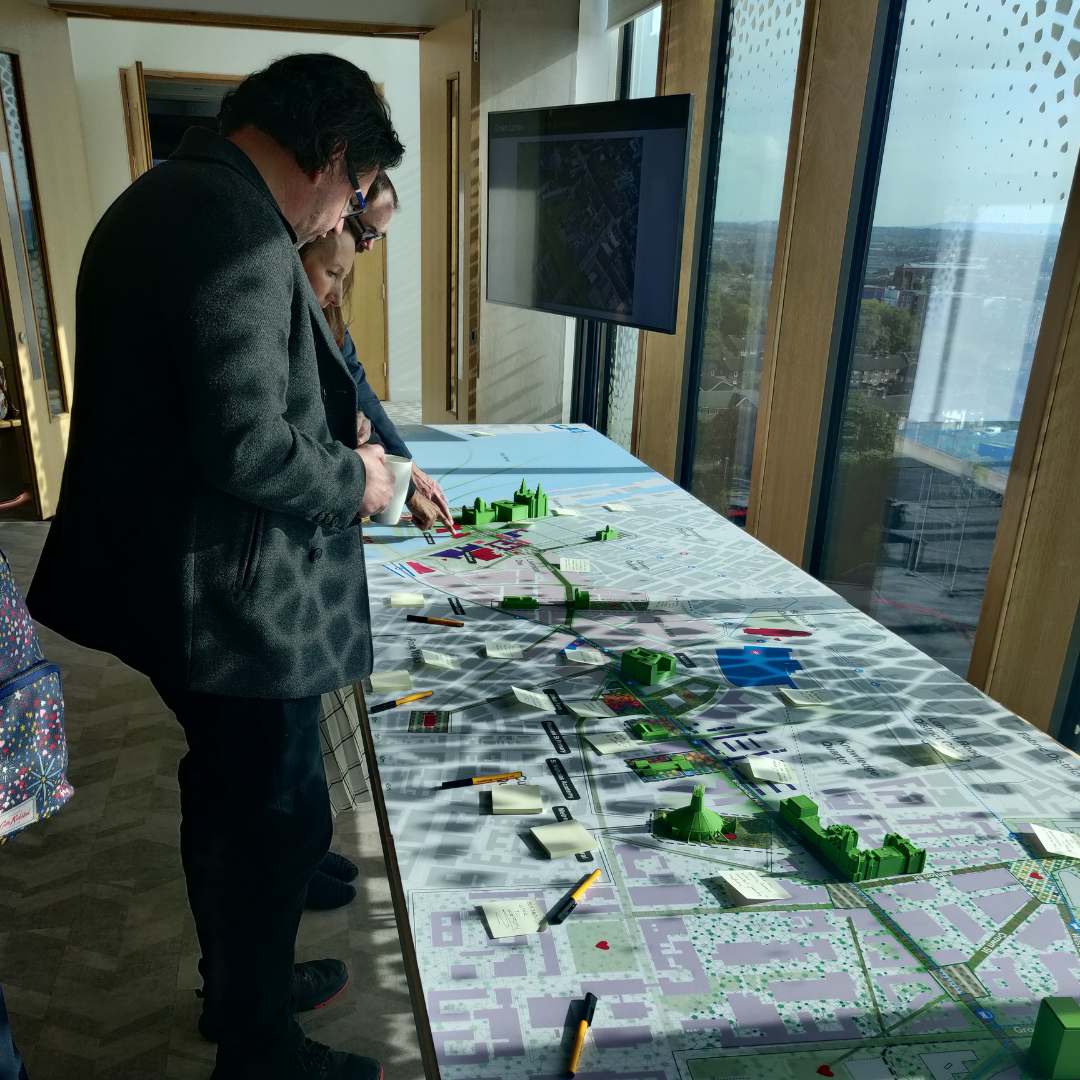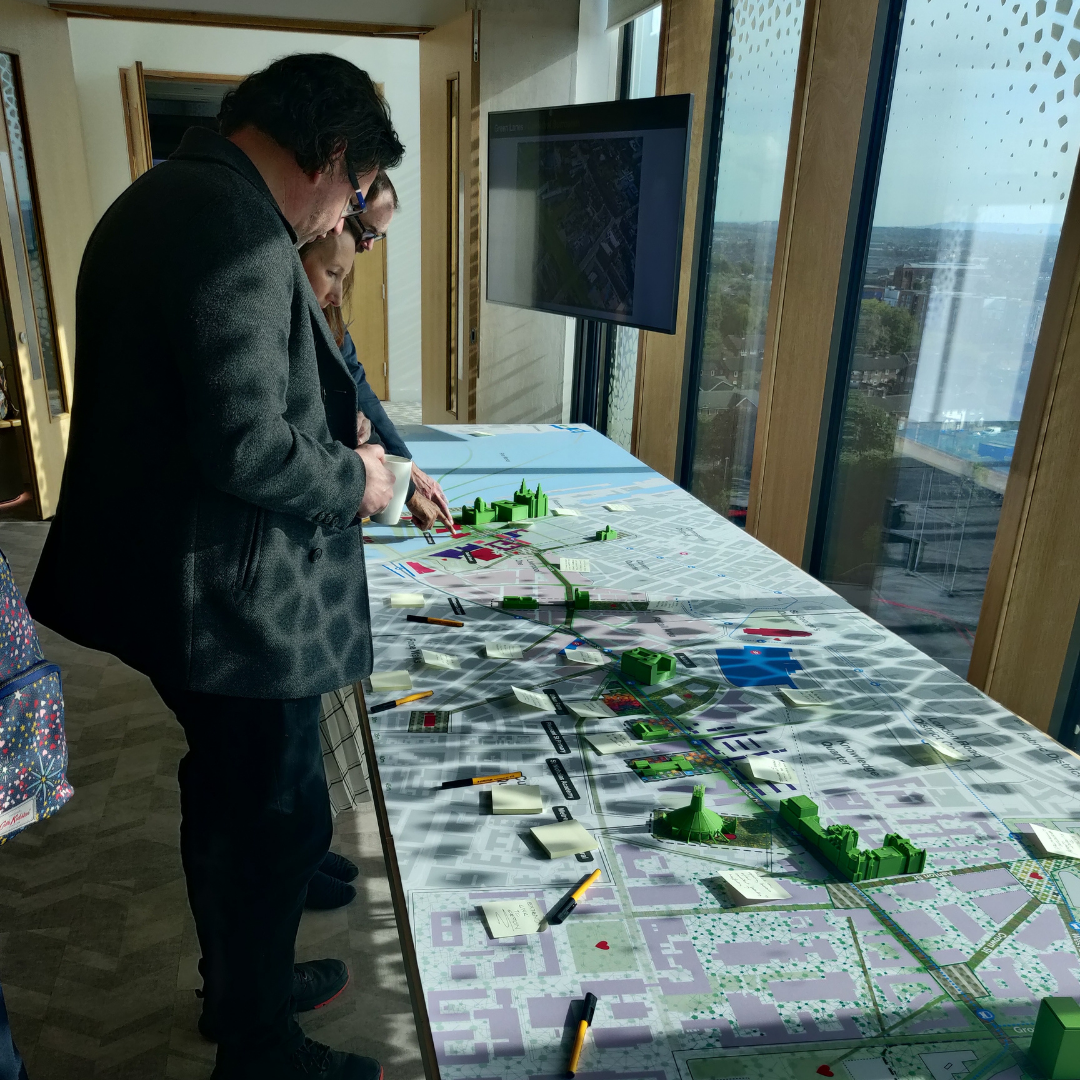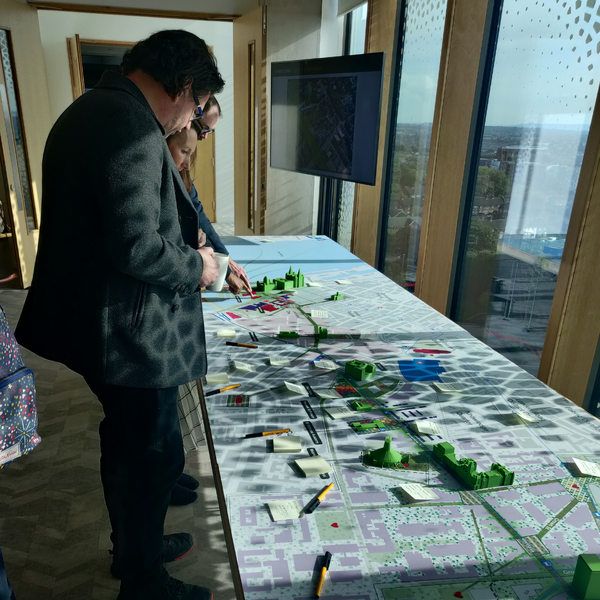Project showcase
Liverpool Green Lanes, Liverpool for Ryder Architecture and Okana

Launched at the International Healthy City Design Congress 2023, Liverpool Green Lanes aims to transform public infrastructure to reduce health inequity and catalyse large-scale greening. This urban health initiative seeks to connect and amplify the positive impacts of current, proposed and potential public and private activities and investments, fostering a healthier, greener urban environment for Liverpool’s communities.
*Future Public Realm is supported by Vestre*
Who is on the project?
Designers - Ryder Architecture, UPN, Okana
Consultants - Evidence First, Prosocial Space, Yeme Tech, Lichfields, WSP, Metro Dynamics, Mima
Describe the context of this project, its neighbourhood and community.
Despite significant regeneration, Liverpool has health, social and economic challenges. This is captured in the ongoing Marmot Indicators work by Liverpool City Council and the Liverpool Marmot Partnership Group. 62% of the population live in the 20% most deprived areas in England, with 3 in 10 children under 16 living in poverty. Life expectancy is lower than the UK average, and suicide rates much higher. For all causes of mortality, Liverpool City was ranked second worst in the north west. Liverpool Green Lanes (LGL) launched at the International Healthy City Design (IHCD) congress 2023 (plan 01). Recognising the problems associated with doing things to communities rather than with communities, our focus over the past year has been engagement. We have taken the time to widen our net of engagement, which we presented at the IHCD congress in 2024. LGL promotes a strategic approach to working with health and population data to make recommendations for the urban environment. Data sources have been utilised to model demographic and health data (See plans 02 - 05). This demonstrates that Liverpool’s city centre is edged by communities displaying inequities across several social metrics. Exploratory spatial data analysis has informed the concept of creating interventions addressing specific areas of higher deprivation and poorer health outcomes. LGL is about reimagining and transforming existing public infrastructure to reduce health inequity, connecting points of need and potential transformation, branching out into disadvantaged neighbourhoods, filling policy gaps, and ensuring continuity through the urban fabric to promote positive social connectivity.
Please describe your approach to this future public realm, including its purpose and motivation. How does it knit into, and serve the needs of, the wider area?
Our approach to the future public realm of LGL is based on: Capturing community wisdom through a participatory approach, Partner engagement, ’Big Concept’, broader than solely an urban greening proposal, Health and wellbeing data and assessment at the start, Embedding a mobility strategy, Authenticity, sense of place and identity, Economic strategy to underpin the project, International best practice. We worked with researchers at GroundsWell and Yeme Tech to produce maps of the proposed LGL route, and possible route extensions, to understand existing access to green space, health status, and deprivation levels. For instance, there is a lack of good quality, accessible green space within the wider 15 minute walking zone around the city centre. Neighbourhoods such as Vauxhall and Islington have poor air quality and self report poorer general health. These visualisations allow identification of priority areas for targeted extensions and demonstrator projects. The route could continue east from the Knowledge Quarter into Kensington and Edge Hill which have higher levels of deprivation and poor health, coupled with lower access to green space. Linking into existing projects and initiatives, such as Urban Green UP, is a key part of this. Subject to funding, we envisage the next stages including knowledge exchange workshops and qualitative participatory research, inviting the public, children and young people, to explore how LGL could benefit local communities in Liverpool. We held initial engagement workshops with St Nicholas Primary School on the LGL route to identify improvements to their learning and wider urban environment.
Describe the social impact of the project: How will it contribute to the economic, environmental and social wellbeing of the wider place and its community?
LGL aims to catalyse large scale greening, active mobility, place activation and community engagement projects to create a ‘green corridor’ through Liverpool, improving economic, environmental, and social wellbeing of citizens. Economic – Research demonstrates that local economies benefit from proximity to green space and well connected, walkable and cyclable areas. LGL aims to put this into practice and repurpose Liverpool’s streets with interventions connecting disadvantaged neighbourhoods with the wider city. LGL outlines a strategic, long term approach along with ‘start by starting’ pilot projects.
Social – LGL aims to empower communities through engagement and coproduction, including schools within the study area. LGL is designed to stimulate debate and interest from a wide range of stakeholders. The process is led by Ryder Architecture, with Okana partners UrbanPlaceNetwork (UPN), collaborating with Liverpool Knowledge Quarter, Liverpool One, Prosocial Place, Engage Liverpool and Farm Urban, amongst others. We identified the health characteristics of local communities and are aligning LGL to address health inequities and access to green spaces. Evidence demonstrates that green infrastructure enhances physical and mental health by improving local air quality and providing more opportunities for outdoor exercise and recreation, which can result in reduced costs for the NHS when new green infrastructure is strategically placed.
Environmental – Through the provision of safe, attractive, inclusive public realm, active travel infrastructure, and public transport / mobility hub links, LGL promotes a modal shift to sustainable transport. New green infrastructure supports climate resilience with shade and shelter, SuDs, carbon sequestration and filtering air pollution.
Gallery

Festival of Pineapples
24-26 February 2026
Pineapples prize giving night
April
Pineapples at Festival of Place
10 June 2026
© The Pineapples - Tweak Ltd. 124 City Road, London, EC1V 2NX. Tel: 020 3326 7238





